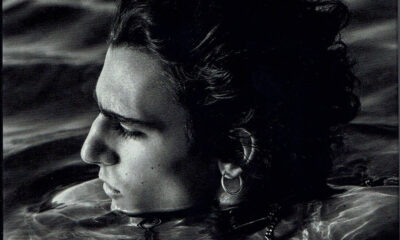Music
The Unknown Music: Jimmy Dawkins ‘Fast Fingers’
Encompassing numerous blues trademarks, ‘Fast Fingers’ stands out as a highlight from a classic blues era.
The year is December 31, 1969, and everyone is out celebrating the end of a destructive decade ridden with hate, loss, and deception. While people are out popping champagne and throwing confetti around like children at a birthday party, others are held up at 2548 N. Halsted St., Chicago, Illinois.
The location is Kingston Mines, a notorious Chicago blues club that’s not too packed, but not too scarce. People down shots of whiskey and smoke their Marlboro Cigarettes. The opener for the night: Jimmy Dawkins, performing his 1969 debut album, Fast Fingers.
My dad, a musical connoisseur, has hundreds of CDs on display in his living room ranging from every type of genre. Out of all his CDs, blues music flourishes the most, which makes it no surprise as to how I stumbled upon Fast Fingers. Dawkins, born in Mississippi and transformed into an American Chicago blues artist, had a four-decade long career, releasing 21 studio albums before passing away at age 76 on April 10, 2013.
I chose this album not because of flashy artwork or a flamboyant stage name, but because of the album name. With an album name Fast Fingers, I thought, “Well clearly this album is going to have a wild guitarist or multiple, so I’m in.” AI was mostly correct. I was expecting some wild-ass finger-picking songs, like a Stevie Ray Vaughn player (which was dumb to set such a high bar), but overall the album title fit well with speedy digits cruising from song to song.
Specifically, track five, “I Learned A Lesson,” describes the album name perfectly. From 2:00 to 3:00, Dawkins unleashes his raw talent and gives his best solo on the album.
Dawkins is seen as a pioneer of “West Side sound” in the Chicago blue genre, which is exactly what Fast Fingers captures. The rich sound of an explosive electric guitar is complimented by a deep sounding saxophone and occasional piano flow through the album. The real story telling here isn’t from the vocals— it’s from the cries of guitar and the wailing on the piano. But that’s what the blues is, right?
The blues is an incredible and historical genre of music. That said, the genre can be subject to criticism on how an album can nearly sound like one elongated song. For example, the latter half of the album, starting with “Night Child,” meshes together and varies only slightly in rhythm and beat. Plus, two of the longest songs on the album “I Don’t Know What Love Is” and “Breaking Down” are back to back, making it sound like an 11 minute song. Not necessarily a detriment to a traditional blues album, but Fast Fingers seems to be on a straight path with little forks in the road to venture on.
“It Serves Me Right To Suffer,” reminds me of “Baby, I’m in the Mood for You” by Bob Dylan, but the cover version by Nick Waterhouse, a contemporary blues/jazz artist. Both songs have an eerily similar guitar riffs and percussion section; the only difference is “It Serves Me To Suffer” is slightly faster than the low tempo Waterhouse tune. In this case, Dawkins focused on more traditional blues tendencies: guitar solo’s with a horn section.
Nowadays, with a Waterhouse sound, new contemporary blues emphasizes on the horn section, backup vocals, and veers away from rocking guitar solos. This can be seen with Dawkins’ “Night Rock” and Watherhouse’s “(If) You Want Trouble).” They have similar guitar riffs through the song; however, “Night Rock” is all guitar solo with little horns in the back, whereas it is flip flopped with “(If) You Want Trouble” including more backup vocals.
As Dawkins finishes his set at Kingston Mines, the crowd applauds louder than expected for the rookie blues musician. More importantly, Dawkins was the opener for Chicago blues legend: Buddy Guy. Guy will be performing his 1968 album A Man And The Blues, which has many similarities to Fast Fingers.
Both albums have longer jams, well over 5 minutes, including rhythmic solos and lyrics filled with troubled pasts. It wouldn’t be too far fetched for Dawkins to have opened up for Guy at some point, specifically with similar blues style and the popular, yet rarely discovered, blues scene in Chicago. Regardless of name recognition compared to Guy, Dawkins’ fast-picking fingers delivered great songs on an exceptional blues album that jump started his career in 1969.
If you obsess over singers and bands, and are one of those people who make a playlist for every occasion, join CMN’s Music Journalism Course and get real-time experience, intense feedback on your writing, exposure to music industry insiders, and a great place to display build your portfolio. Get all the details on the Music Journalism Course here.











